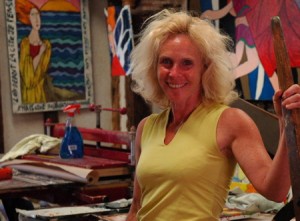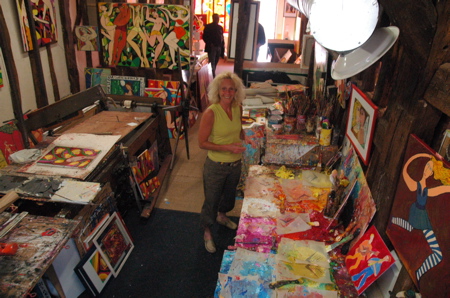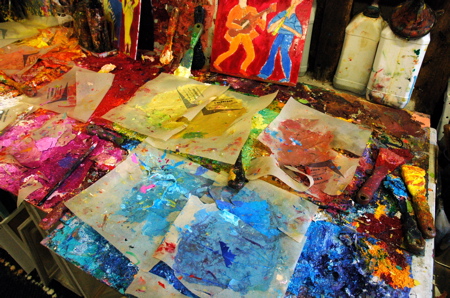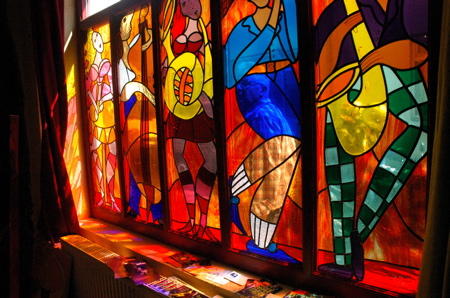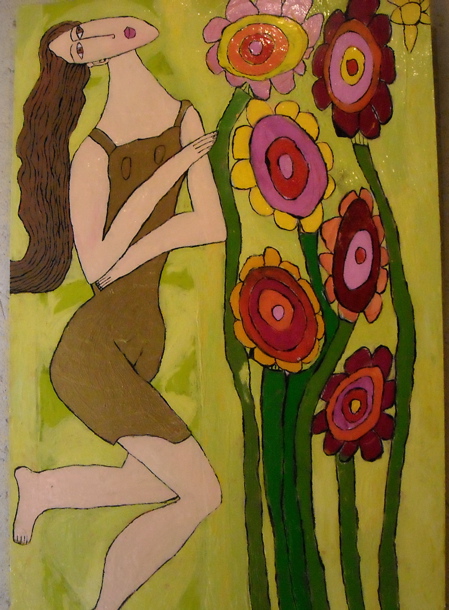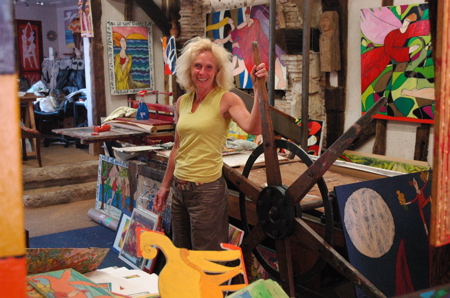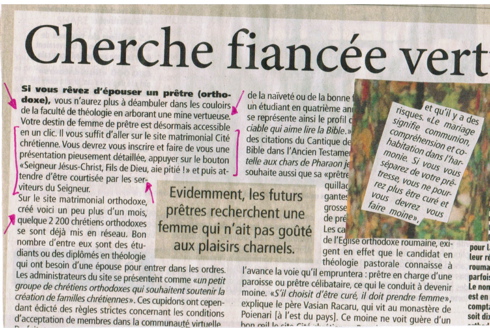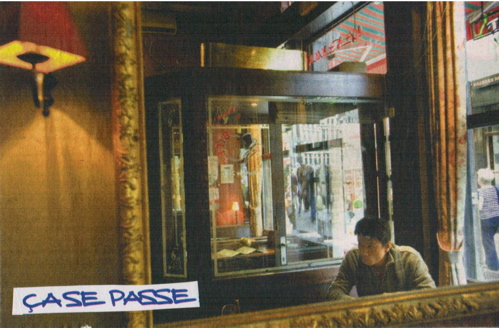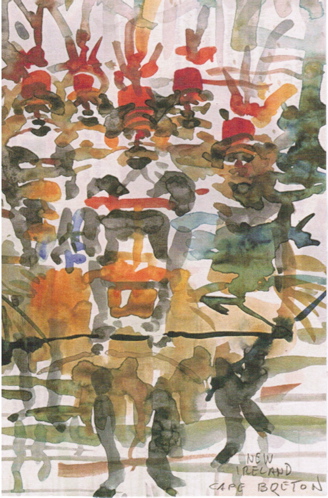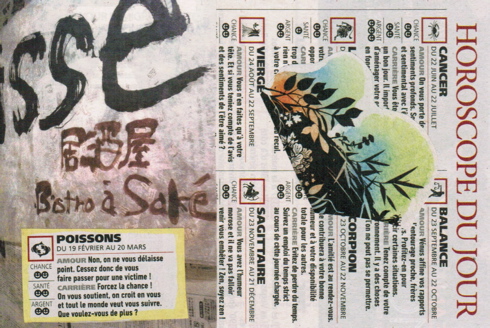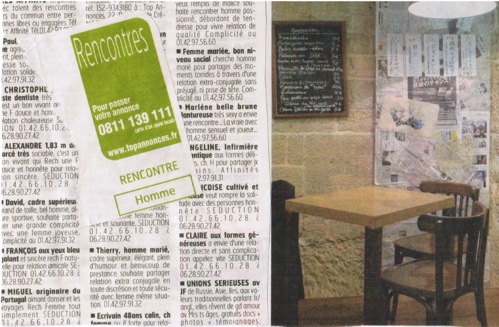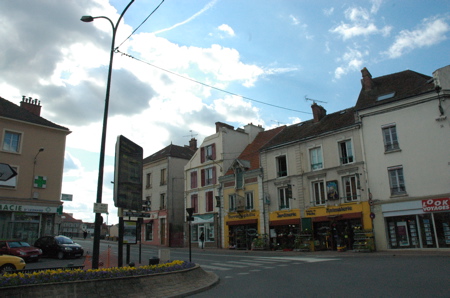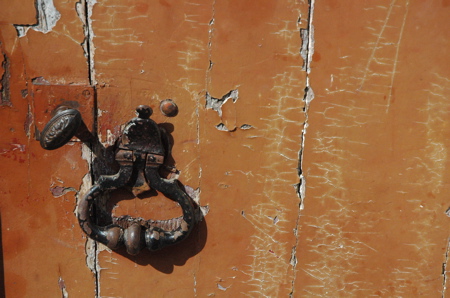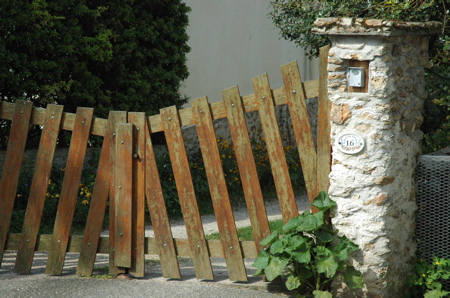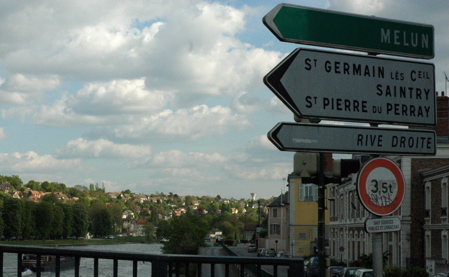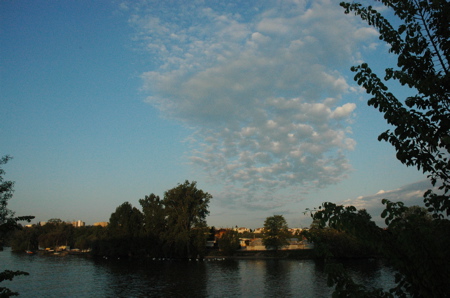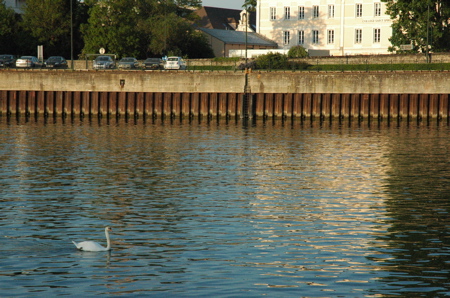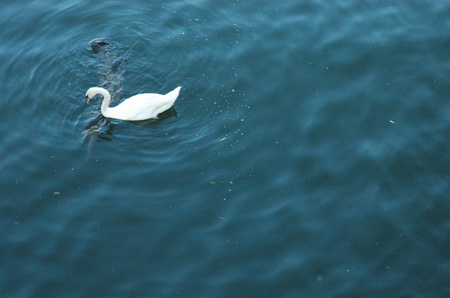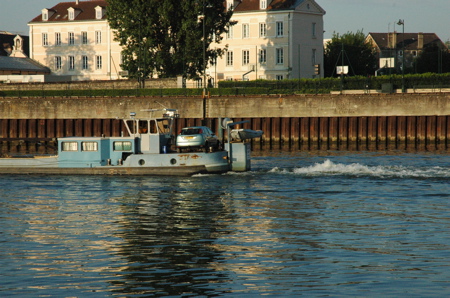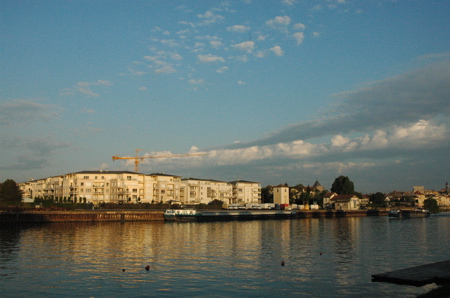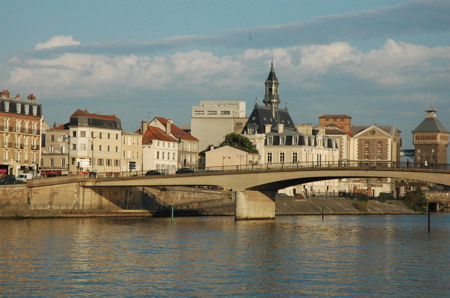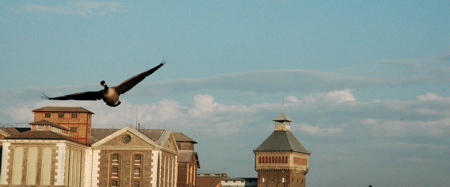I am having lunch with my friends, Cyprian and Martine at their home in Chartres, France. It is a simple fare of tabouleh salad, pasta with homemade mayonnaise and delicious bits of salmon mixed in.
On television, there is a documentary on Armenian Christians of France. At the table, we are talking about social integration in the country. It all started when I asked if immigrants were welcomed in French society.
Martine replies yes, but they are expected to become fully French as they live in France.
“We are very proud of our history and expect people to know it,” says Martine, explaining that it is the base of French patriotism.
The fact that Russian nobility in the 17th century spoke French is still a source of pride for French citizens today. They are proud of their culture, of their language and want to conserve it.
French was the lingua franca for 3 centuries, only recently overshadowed by English. In an effort to preserve their language, French conservators are requiring, for instance, that American movies showing in Paris theaters be dubbed instead of subtitled.
I remark how different that attitude is from the United States. When I became an American citizen, the juge at the beautiful courtroom ceremony said words that warmed my heart:
“Although you have sworn loyalty to the United States government, you should keep your culture, your language, because with your heritage, you enrich America.”
By contrast, French of the right wing say: throw out your culture in order to become French.
Martine explains French conservators fear losing their Frenchness. They want to hold on to the French culture by all means. That includes creating courses to bring immigrants up to speed with French history and behavior. Indeed, after a couple of generations, the immigrant family looks very much French.
What conservators do not realize is that you do not lose your culture by living next door to someone who has a different one.
“I cannot expect Cyprian to have the same childhood memories as I do,” Martine says. “That’s impossible and ridiculous.”
At one point she opens a tupperware. The smell almost knocks me out. Martine cuts into the Camembert and offers us a piece. Cyprian and I both vigorously shake our heads no. I like cheese, but not that kind. As for Cyprian, he does not eat cheese. Period. I am sure Martine would faint over some of our strong smelling African dishes.
“I am married to him and we have children together,” Martine continues. “And I still consider myself very much French.”
Martine was born and raised in Chartres. Cyprian is originally from Nigeria and as he says himself he has firmly planted ‘his bottle’ (ie. his life) in Chartres, France.
They are not unique as far as mixed couples.
I remember the first week I was in France. I was standing in the main aisle of a supermarket, watching people as they shopped. I saw so many mixed couple pass by; I was amazed.
Despite its conservatism, France has the highest number of mixed couples in Europe.
16
Jun
Watch the VIDEO of Kabuika at the National Library in Paris
I went to la Bibliothèque Nationale de France (François Mitterrand). It was the only library in Paris where I could find books on the Luba culture. I discovered books of the 1960s on the Baluba. What a treasure!
The library is built for the conservation of books, films, audio recordings, etc. People are more like an afterthought. I am exaggerating, but only a little. The place has a clean, industrial feel to it.
La Bibliothèque Nationale holds an amazing collections of books and other items published and produced in France. Its aim is to preserve the collective memories of the country.
This is a role model for Congo. We really need to conserve our rich heritage.
13
Jun
I’m Kabuika.
Although I have a typical Luba name, it is considered unusual in some parts of the world. My name is always an ice breaker when I meet new people.
Such was the case when I ran into Yves, a French man, standing outside of the cathedral in Chartres, France.
I pulled out my iPad and filmed our meeting. Here is a loose translation of our conversation in the video:
Yves: “What’s your name? Meredith?”
Me: “Kabuika”
Yves: “Kabuika? What a name! What a name!
… And what do you do in Chicago?”
Me: “I am an independent journalist. Here in France, I’m filming, interviewing, photographing tons of people. Then I put all the stories on my blog. And people get to follow what I’m doing.”
“That’s incredible!”
Me: “I will put you on YouTube.”
“I came here when I was 19,” Leslie Xuereb Amiel said. “I thought I would be here for a couple of months and now I’m here for 30 years.”
Leslie is from New York City. She came to Paris to study art and art history for a few months. She fell in love with a viola player, traveled with him, stayed, painted and ended up moving to Chartres, France. Since she is American, a friend took me to see Leslie in her studio.
Everywhere I looked, I saw bright colors. Her studio was cool and colorful, a sharp contrast from the intense sun outside.
“I create this imaginary world as a kind of a refuge for myself, because I’m not very happy with the world [outside] as it is,” Leslie said. “[My art] has helped me run away from the real world.”
The art studio is certainly a haven. It feels good to be in it. Leslie has painted stain glass on her windows to create that feeling. The stain glass protects from the outside world and at the same time makes the studio very lively. She hopes that her happy art brightens others too, ”If I can give a bit of energy to others, that will be great.”
Leslie has been painting women with flowers as big as the women. Her art portrays “the joy of simple things, of flowers, of the sun, of the earth … the interactions between [them].”
Her paintings show women bouncing up to be part of the trees, the moon, and the air.
“All your characters are women,” I pointed out to her.
“Yeah, mostly. There are some angels here and there.” She replied. “Every now and then there is a guy; he’s more like an accessory,” she burst out laughing. “It says a lot about me.”
Leslie now has 3 children and her whole life is in Europe.
“How could you possibly imagine that when you go abroad to study, you’re going to stay for your life?” exclaimed the artist, who has been in France for almost 30 years. “I think when you make a decision, you absolutely don’t know where it will lead to.”
Her decision to come to France led Leslie to a life centered around her art.
“I don’t own a house… I rent an apartment, but I am buying a studio, [because] I need to own a place to create in.”
“It’s kind of a bit backward,” she added with a shrug. “Besides the children, everything personal goes into my brushes and paints. I don’t own jewelries. This is it!” She said spreading her hands out to show her studio.
From her life in France, Leslie realized the most important thing is ” to keep on the path of creation all the way, no matter what happens. The ultimate goal is to flourish.”
2
Jun
When I ride the métro in Paris, I flip through the readily-available free magazines, “A Nous” and “Métro.”
I sometimes find weird news that send me rolling with laughter. Then I make postcards out of them.
Such is the case with “Cherche fiancee vertueuse,” which literally means “looking for a virtuous fiancee.” It’s a dating service for Eastern European Orthodox would-be priests.
Here are the instructions…
“Open an account, introduce yourself with pious details, click on the button “Lord Jesus Christ, son of god, have pity on us!” then wait to be courted by the servants of the lord.”
Before getting ordained, Orthodox theology students have to be married. If not, they become monks.
Hence, the rush.
Enjoy the homemade postcards and have a great weekend!
Kabuika
http://kabuikakamunga.com
Above is a postcard I made out of an ad found in one of those free daily papers one can pick up at any metro station in Paris. The central ad reads,
“Thierry, married man. Elegant executive with humor, fit to be seen, wishes to engage in extra-marital relationship in all discretion and security with woman in similar situation.”
The ad ends with a phone number, not a cell phone number, but a landline telephone number!
That’s kind of shocking since the ad is placed in a Western society where monogamy is the rule.
I recently asked the patriarch of my family why so many Baluba men have multiple wives. He replied, it is so they would not go looking for other women elsewhere.
His answer surprised me since I had expected Luba polygamy to exist for the purpose of engendering as many children as possible. Children are the primary reason for polygamy, my uncle admitted. A reader had guessed well, regarding the story “Multiple Wives.”
Luba men are polygamous in order to have a lot of kids, who will later care for them as they grow old. So yes, it is a form of social security system.
However, the Luba society allows men to marry several wives for a second very good reason.
“Men are going to run after many different women anyway,” my uncle said.
Personally, I don’t believe that all men (Luba or not) are all womanizers. My uncle himself has only had one woman for 60 years.
The patriarch carried on. Luba men are encouraged to make those relationships legal and public, One. So that there could be no illegitimate children. Two. So that those men would be fully involved in the lives of their several wives. This was a good way to keep them busy and decrease the likelihood of them wandering in the street looking for more.
So here is an idea.
If French men start to marry let’s say two or three women, they would be so occupied with their wives that they won’t have time for any extra-marital affairs.
You see, the Luba resolution could potentially be used to solve the French quandary.
1
Jun
I know I am in France, because everywhere I look I see beauty.
This was my first impression when I took my first walk in the town of Saintry sur Seine. It still is.
A 60-year-old-looking Frenchman is sweeping his wooden gate as I walk by.
“It has to be clean.” He tells me with a shrug and a smile.
I smile back. The Frenchman seems to have come out of a postcard. All he needs is a beret.
Everything in France is old and charming. You can feel the centuries of stories in every nook and stone. I admire the old wooden door with its rough iron handle.
Gates here could be the subject of an entire photography book. They are all so different and original.
French people have a particular eye for beauty. In early April, the purple-scented flowers showered me with their perfume as I walk underneath them on the sidewalks. The following month, the town is now decorated with potted flowers at every window, framed with wooden shutters.
For me France is a guide post in this stage of my new life, pointing in the direction I choose to take. And because these sign posts are French, they do so with charming details, on a backdrop of the river Seine.
29
May
It’s Sunday morning. I decide to watch the sunrise. The town I live in, Saintry sur Seine, is exactly what its name says, “Saintry on the river Seine.” The river Seine snakes through Paris and its banlieues. Being on La Seine means being in the valley. On either side of the river, hills ascend in the east and in the west. It will take some time for the sun to rise from above the hill and shine its rays on the small town. Perfect! That means an extra hour in bed for me before going out to shoot the sunrise.
After an early breakfast of baguette and hot chocolate, I’m on the road. The city is still asleep as I walk along La Seine. There are no cars, no early-bird construction workers, only the occasional homeless men asking for a cigarette. It feels like the sun is putting on a show for only me and the swan.
The swan glide silently on La Seine letting me take their portraits. I continue walking, my sandals crunching the black gravel. My steps harmonize like music as they combine with the ”Cock-a-doodle-doooo” of a nearby chicken, except that French chickens say “cocorico.”
Soon the motor sound of a barge breaks the tranquil morning. A blue barge, complete with a car on top, churns down the river.
I wonder what it is like to live on a barge? It is a common way of life in France. A barge (called peniche in French) sometimes carries a car for its owner to zoom to work every morning, I imagine. Barges here even have mailboxes on the river banks for the mailman to bring letters and packages to the river people.
I walk for about an hour and reach the next city called Corbeil.
In Corbeil, my sunrise walk ends with a view of la Mairie (city hall) and a bird flying over the city, waking up.



